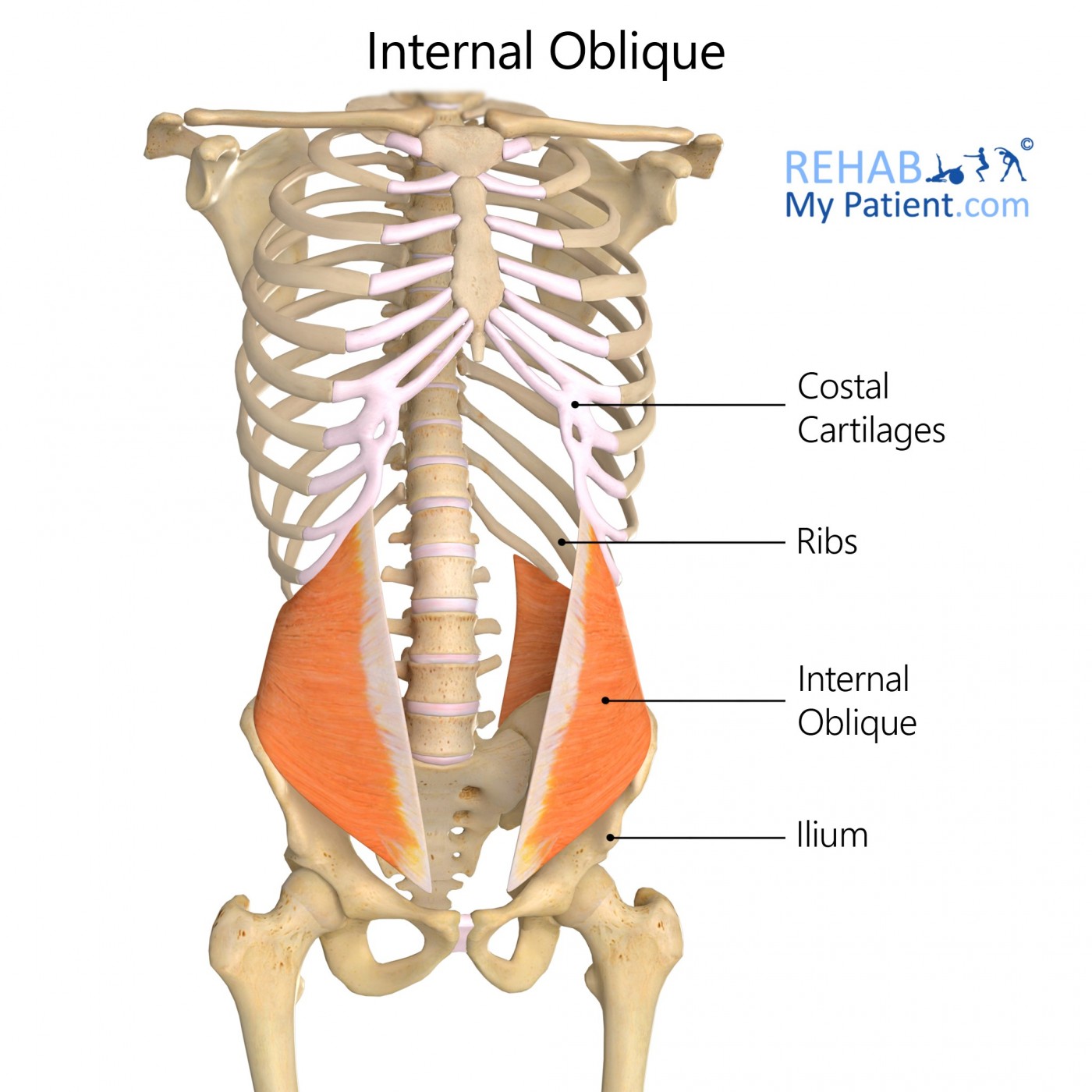Internal Oblique
Posted on 24th Jul 2020 / Published in: Abdomen

General information
The internal oblique is a broad, thin muscle situated on the lateral side of the abdomen. Along with the external oblique, it comprises a layer of the inner aspect of lateral abdominal wall and the inner aspect with the transverse abdominis.
Literal meaning
The within (middle) slanting muscle of the belly.
Interesting information
The fibres of this muscle have an oblique orientation, which is where the name originates from, and it aids in abdominal pressure maintenance.
The risk of abdominal hernias is increased when weakness of the internal abdominal oblique or the other abdominal muscles is present.
Origin
Lateral two-thirds of the inguinal ligament, anterior two-thirds of the intermediate line of the iliac crest, thoracolumbar fascia.
Insertion
Lower four ribs, abdominal aponeurosis of linea alba, crest of pubis.
Function
Bilateral Contraction: Trunk flexion
Unilateral Contraction: Trunk lateral flexion
Compression: increases the intraabdominal pressure.
Nerve supply
Ventral rami of intercostal nerves (T 7-T 11), ilioinguinal nerve( L1).
Blood supply
Lower posterior intercostal and subcostal arteries, superior and inferior epigastric arteries, superficial and deep circumflex arteries, posterior lumbar arteries.

Relevant research
Evidence shows that the thickness of the transverse abdominus and internal oblique was high in a simulated weight-bearing abdominal draw in manoeuvre
Kim, J. S., Seok, C. H., & Jeon, H. S. (2017). Abdominal draw-in manoeuvre combined with simulated weight bearing increases transversus abdominis and internal oblique thickness. Physiotherapy theory and practice, 33(12), 954–958.
Internal oblique exercises

Boxer's oblique crunch
Lie on your back with both knees bent and perform a crunch by moving your elbow towards the opposite knee using the abdominal muscles to initiate the movement. The shoulder blades should only just lift off the floor. Repeat each side.
Sign UP
Sign up for your free trial now!
Get started with Rehab My Patient today and revolutionize your exercise prescription process for effective rehabilitation.
Start Your 14-Day Free Trial